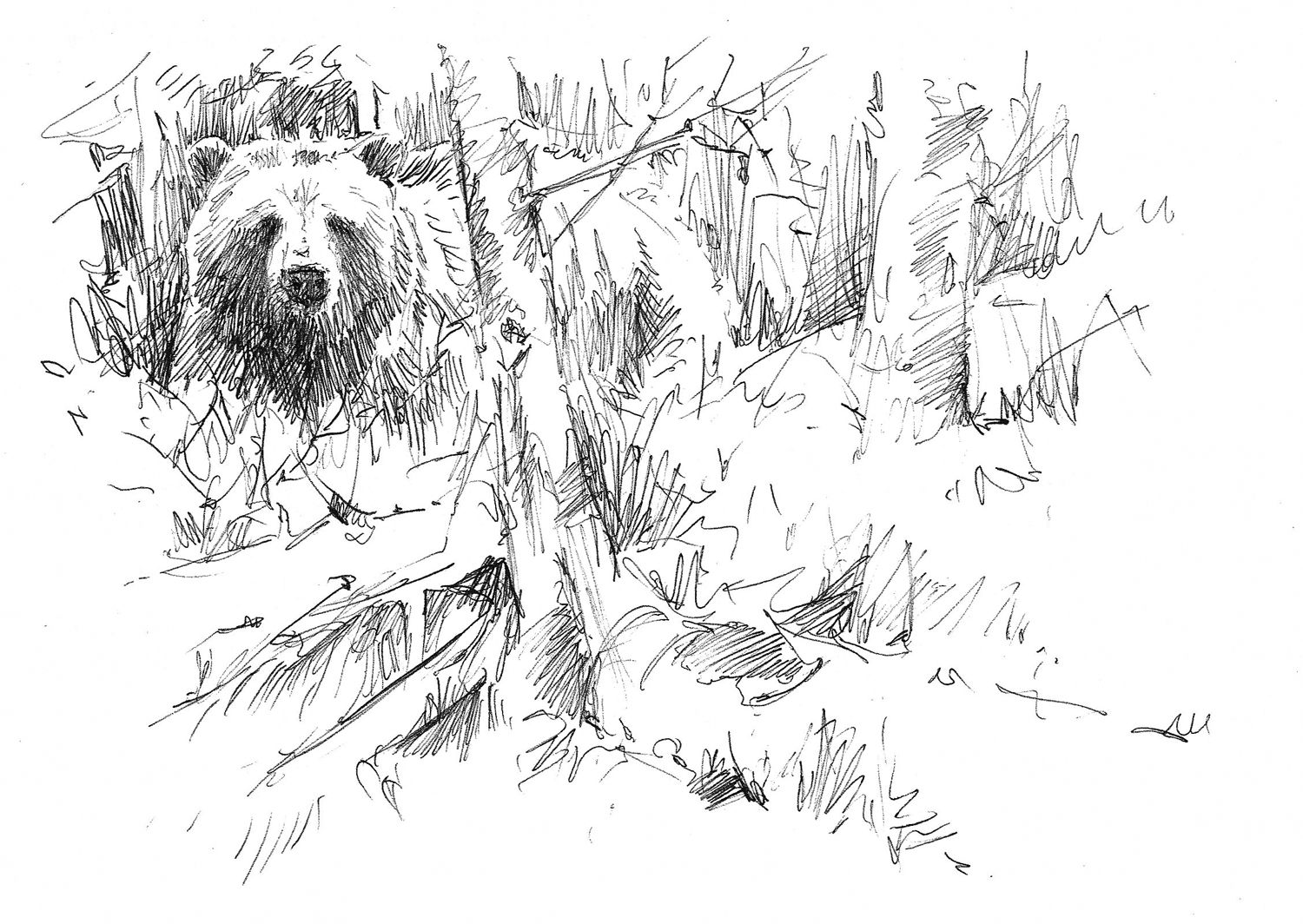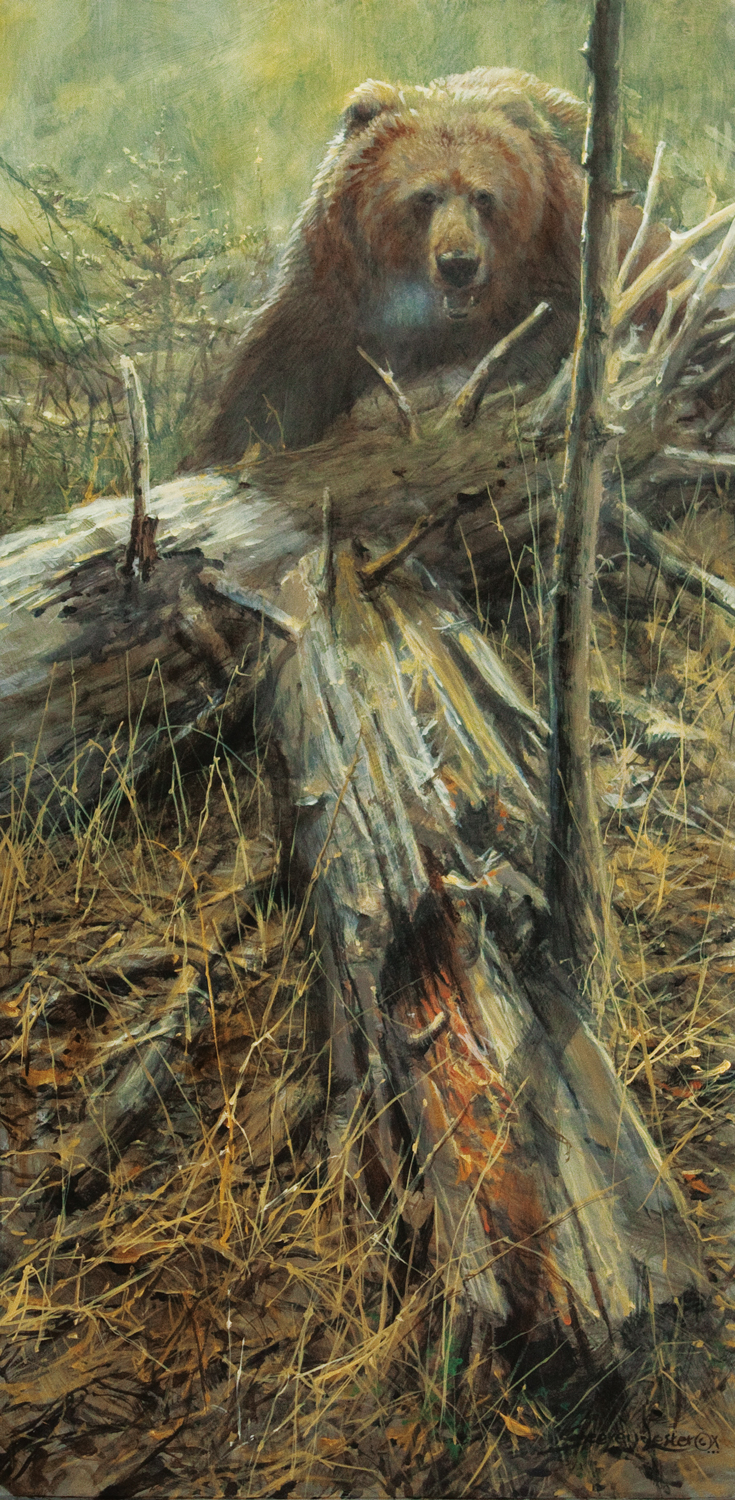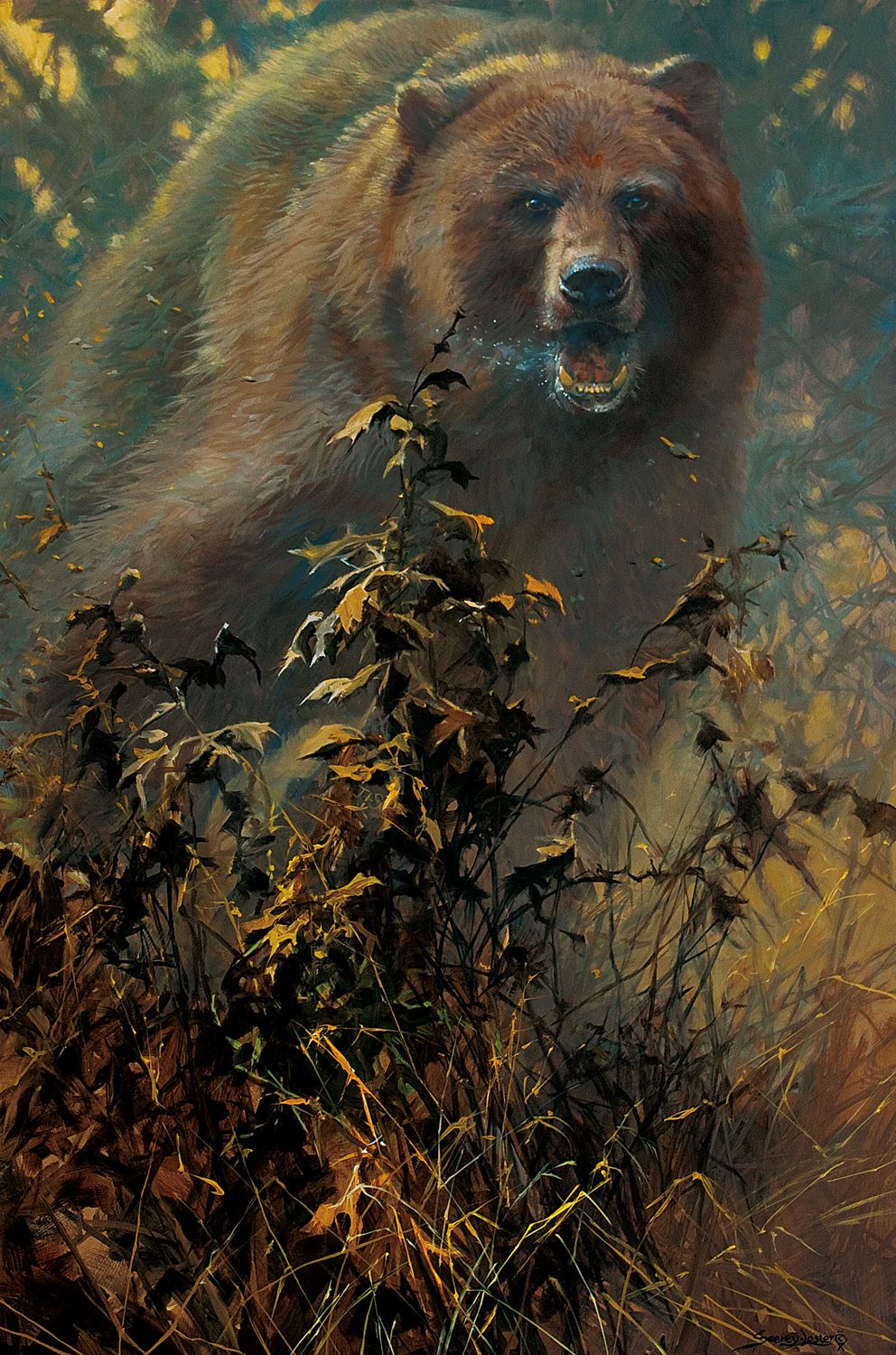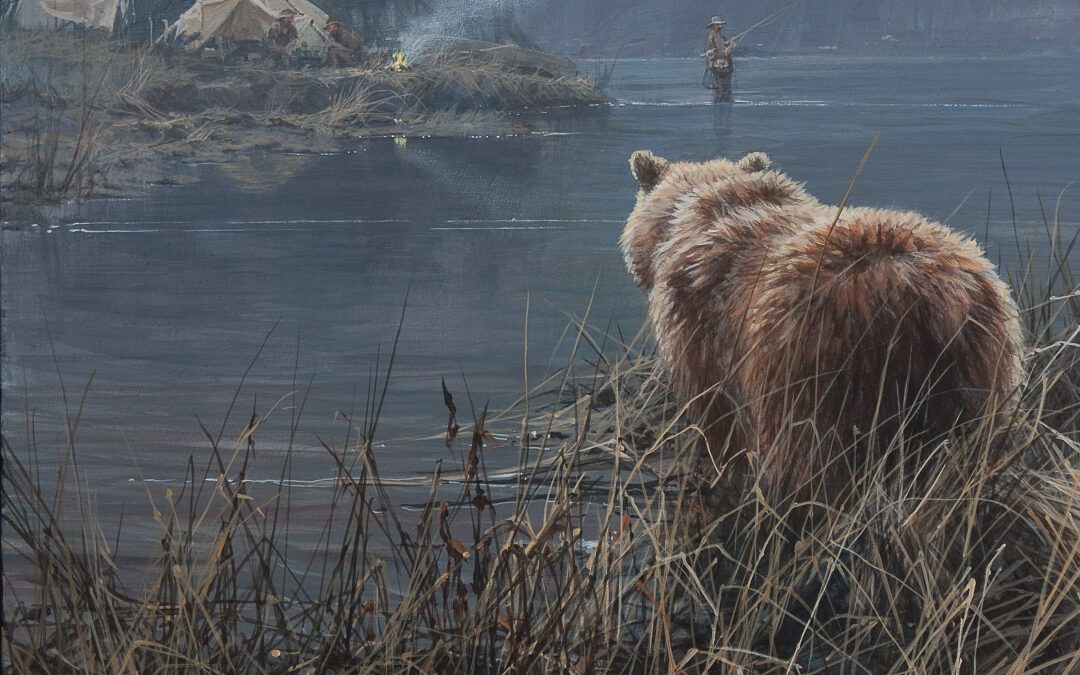The old fellow, who was known by the nickname of “Buckskin,” had camped for several months in the Badlands but a score of miles away from my ranch. Most of his previous life had been spent among the main chains of the Rockies. After supper the conversation drifted to bears, always a favorite subject of talk in frontier cabins, and some of my men began to recount their own adventures with these great, clumsy-looking beasts.
This at once aroused the trapper’s interest. He soon had the conversation to himself, telling us story after story of the bears he had killed and the escapes he had met with in battling against them. In particular he told us of one bear which, many years before, had killed the partner with whom at the time he was trapping.

The two men were camped in a high mountain valley in northwestern Wyoming, their camp being pitched at the edge of a “park country”—that is, a region where large glades and groves of tall evergreen trees alternate. They had been trapping beaver, the animal which, on account of its abundance and the value of the fur, was more eagerly followed than any other by the old-time plains and mountain trappers. They had with them four shaggy pack ponies, such as most of these hunters use, and as these ponies were not needed at the moment, they had been turned loose to shift for themselves in the open glade country.
Late one evening three of the ponies surprised the trappers by galloping up to the campfire and there halting. The fourth did not make his appearance. The trappers knew that some wild beast must have assailed the animals and had probably caught one and caused the others to flee toward the place which they had learned to associate with safety.
Before dawn the next morning the two men started off to look for the lost horse. They skirted several great glades, following the tracks of the ponies that had come to the fire the previous evening. Two miles away, at the edge of a tall pine wood, they found the body of the lost horse, already partially eaten.

Dead Fall by John Seerey-Lester
The tracks ’round about showed that the assailant was a grizzly of uncommon size, which had evidently jumped at the horses just after dusk as they fed up to the edge of the woods. The owner of the horse decided to wait by the carcass for the bear’s return, while old Buckskin went off to do the day’s work in looking after traps and the like.
Buckskin was absent all day and reached camp after nightfall. His friend had come in ahead of him, having waited in vain for the bear. As there was no moon, he had not thought it worthwhile to stay by the bait during the night.
The next morning they returned to the carcass and found that the bear had returned and eaten his full, after which he had lumbered off up the hillside. They took up his tracks and followed him for some three hours, but the wary old brute was not to be surprised. When they at last reached the spot where he had made his bed, it was only to find that he must have heard them as they approached, for he had evidently left in a great hurry.
After following the roused animal for some distance, they found they could not overtake him. He was in an ugly mood and kept halting every mile or so to walk to and fro, bite and break down the saplings, and paw the earth and dead logs, but in spite of this bullying he would not absolutely await their approach, but always shambled off before they came in sight.
At last they decided to abandon the pursuit. They then separated, each to make an afternoon’s hunt and return to camp by his own way.
Our friend reached camp at dusk, but his partner did not turn up that evening at all. However, it was nothing unusual for either one of the two to be off for a night, and Buckskin thought little of it.
Next morning he again hunted all day, and returned to camp fully expecting to see his friend there, but found no sign of him. The second night passed, still without his coming in.
The morning after, the old fellow became uneasy and started to hunt him up. All that day he searched in vain, and when, on coming back to camp, there was still no trace of him, he was sure that some accident had happened.
The next morning he went back to the pine grove in which they had separated on leaving the trail of the bear. His friend had worn hobnail boots instead of moccasins, and this made it much easier to follow his tracks. With some difficulty the old hunter traced him for some four miles, until he came to a rocky stretch of country, where all sign of the footprints disappeared.
However, he was a little startled to observe footprints of a different sort. A great bear, without doubt the same one that had killed the horse, had been traveling in a course parallel to that of the man. The beast had apparently been lurking just in front of his two pursuers the day they followed him from the carcass, and from the character of the “sign” Buckskin judged that as soon as he separated from his friend, the bear had likewise turned and begun to follow the trapper.
The bear had not followed the man into the rocky piece of ground, and when the old hunter failed in his efforts to trace up his friend, he took the trail of the bear instead.

A Brush With Death by John Seerey-Lester.
Three-quarters of a mile on, the bear, which had so far been walking, broke into a gallop, the claws making deep scratches here and there in the patches of soft earth. The trail then led into a very thick and dark wood, and here the footprints of the man suddenly reappeared.
For some little time the old hunter was unable to make up his mind with certainty as to which one was following the other, but finally, in the decayed mold by a rotten log, he found unmistakable sign where the print of the bear’s foot overlaid that of the man. This put the matter beyond doubt. The bear was following the man.
For a couple of hours more the hunter slowly and with difficulty followed the dim trail. The bear had apparently not cared to close in, but had slouched along some distance behind the man. Then, in a marshy thicket where a mountain stream came down, the end had come.
At this place the man, still evidently unconscious that he was being followed, had turned and gone upward, and the bear, altering his course to an oblique angle, had intercepted him, making his rush just as he came through a patch of low willows. The body of the man lay under the willow branches beside the brook, terribly torn and disfigured.
The bear had evidently rushed at him so quickly that he could not fire his gun and had killed him with its powerful jaws. The unfortunate man’s body was almost torn to pieces. The killing had evidently been done purely for malice, for the remains were uneaten, nor had the bear returned to them.
Angry and horrified at his friend’s fate, old Buckskin spent the next two days looking carefully through the neighboring groves for fresh tracks of the cunning and savage monster. At last he found an open spot of ground where the brute was evidently fond of sunning himself in the early morning, and to this spot the hunter returned before dawn the following day.
He did not have long to wait. By sunrise a slight crackling of the thick undergrowth told him that the bear was approaching. A few minutes afterward the brute appeared. It was a large beast with a poor coat, its head scarred by teeth and claw marks gained in many a combat with others of its own kind. It came boldly into the opening and lay down, but for some time kept turning its head from side to side so that no shot could be obtained.
At last, growing impatient, the hunter broke a stick. Instantly the bear swung his head around sidewise. In another moment a bullet crashed into its skull at the base of the ear, and the huge body fell limply over on its side, lifeless.
Note: This story appeared in the September/October 2015 issue of Sporting Classics.

